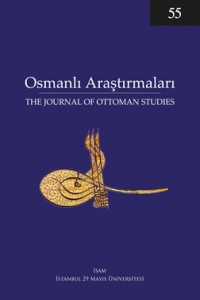Öz
The prolific Ottoman historian Suraiya Faroqhi co-edited with Elif Akçetin a new volume on material consumption in the Qing and the Ottoman worlds in the eighteenth century. Several writers in this highly diverse volume look into the social and economic relations between the Ottoman and the Qing empires. After the introduction, the first chapter, “Setting the Stage” (p. 38-58), opens the discussion on material culture with references to new approaches by the editors. Chapter I presents consumption patterns in the Qing and the Ottoman empires by analyzing land use, population, trade effects, urban life and food culture. The Ottoman elite and their possessions receive special attention in that part. This chapter indicates that the essays on the Qings and the Ottomans group around a set of themes. Akçetin claims that similar to the relation between the Nile and the Egyptian civilization, the Qing Empire relied on the great opportunities offered by such great rivers as the Yangzi and the Yellow to boost commerce and consumption during the 1700s. On the Ottoman side, estate inventories
of deceased persons and other registers, especially these of local qadis are major sources for the history of Ottoman material culture through the eighteenth century. The new interest in consumption and material culture in the Qing and the Ottoman empires rely on these sources primarily.
Anahtar Kelimeler
Elif Akçetin and Suraiya Faroqhi (eds.), Living the Good Life: Consumption in the Qing and Ottoman Empires of the Eighteenth Century,
Öz
The prolific Ottoman historian Suraiya Faroqhi co-edited with Elif Akçetin
a new volume on material consumption in the Qing and the Ottoman worlds
in the eighteenth century. Several writers in this highly diverse volume look into
the social and economic relations between the Ottoman and the Qing empires.
After the introduction, the first chapter, “Setting the Stage” (p. 38-58),
opens the discussion on material culture with references to new approaches by
the editors. Chapter I presents consumption patterns in the Qing and the Ottoman
empires by analyzing land use, population, trade effects, urban life and food
culture. The Ottoman elite and their possessions receive special attention in that
part. This chapter indicates that the essays on the Qings and the Ottomans group
around a set of themes. Akçetin claims that similar to the relation between the
Nile and the Egyptian civilization, the Qing Empire relied on the great opportunities
offered by such great rivers as the Yangzi and the Yellow to boost commerce
and consumption during the 1700s. On the Ottoman side, estate inventories
of deceased persons and other registers, especially these of local qadis are major
sources for the history of Ottoman material culture through the eighteenth century.
The new interest in consumption and material culture in the Qing and the
Ottoman empires rely on these sources primarily.
Anahtar Kelimeler
Ayrıntılar
| Birincil Dil | İngilizce |
|---|---|
| Bölüm | Makaleler |
| Yazarlar | |
| Yayımlanma Tarihi | 4 Mayıs 2020 |
| Yayımlandığı Sayı | Yıl 2020 Cilt: 55 Sayı: 55 |


